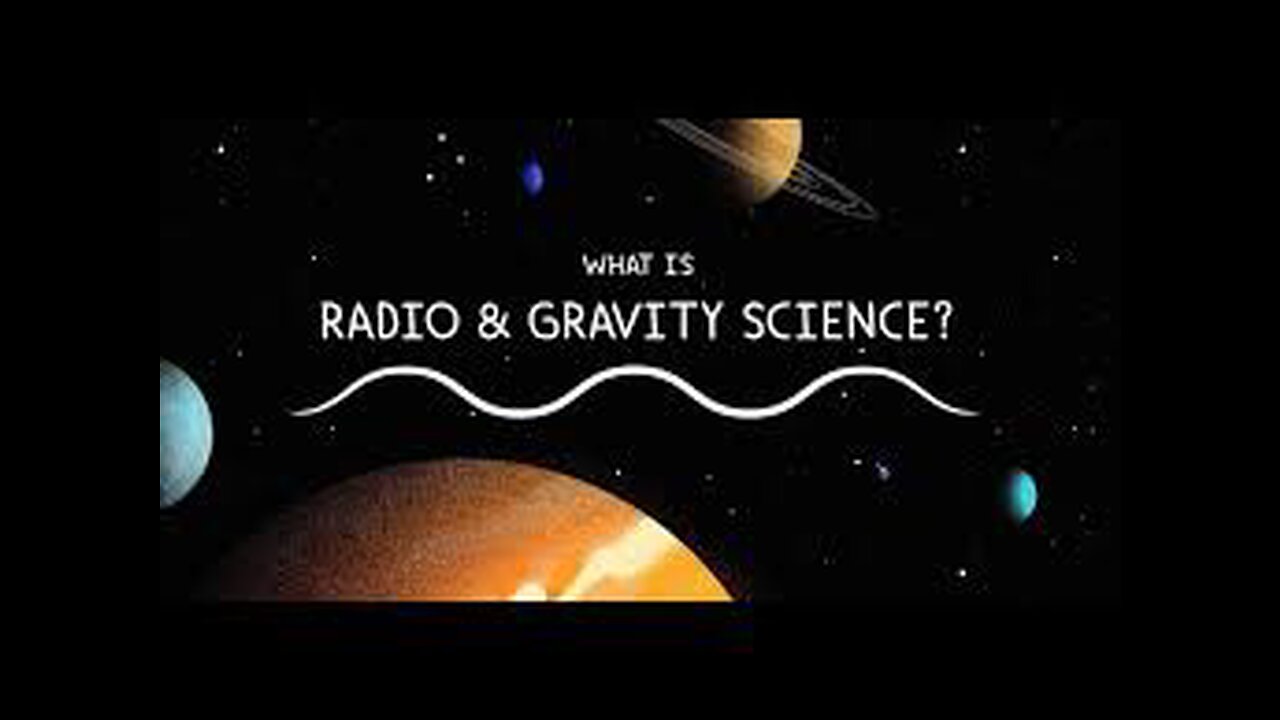Premium Only Content

How NASA Uses Gravity and Radio Waves to Study Planets and Moons
The Deep Space Network, NASA’s international collection of giant radio antennas used to communicate with spacecraft at the Moon and beyond, helps scientists and engineers use gravity and radio science experiments to learn more about our planetary neighborhood.
After reaching a spacecraft reaches its destination, it uses radio antennas to communicate with the Deep Space Network, which in turn transmits radio signals back to the spacecraft. Every spacecraft travels in a predetermined path emitting radio signals as it orbits around its target. Scientists and engineers can infer the spacecraft's location and how fast it's going by measuring changes in the spacecraft's radio signal frequency. This is made possible by the Doppler effect, the same phenomenon that causes a siren to sound different as it travels towards and away from you.
The Doppler phenomenon is observed here when the spacecraft and the Deep Space Network antenna move in relation to each other. Differences between the frequency of radio signals sent by the spacecraft as it orbits and signals received on Earth give us details about the gravitational field of a planetary body. For example, if the gravity is slightly stronger, the spacecraft will accelerate slightly more. If gravity is slightly weaker, the spacecraft will accelerate slightly less. By developing a model of the planetary body's gravitational field, which can be mapped as a gravitational shape, scientists and researchers can deduce information about its internal structure.
The Deep Space Network was developed by and is managed by NASA’s Jet Propulsion Laboratory (JPL) in Southern California. The antennas of the Deep Space Network are the indispensable link to robotic explorers venturing beyond Earth. They provide the crucial connection for commanding our spacecraft and receiving never-before-seen images and scientific information on Earth, propelling our understanding of the universe, our solar system and ultimately, our place within it.
JPL manages the Deep Space Network for the Space Communications and Navigation (SCaN) Program, based at NASA Headquarters within the Space Operations Mission Directorate.
Learn more about the DSN at go.nasa.gov/about-dsn
Learn more about the DSN and the Doppler Shift at
• How Do We Know Where F...
Credit: NASA/JPL-Caltech
-
 53:17
53:17
Candace Show Podcast
2 hours agoBREAKING NEWS: A Woman Was Seen With Charlie Kirk's Shooter | Candace Ep 246
42.8K133 -
 DVR
DVR
The Trish Regan Show
2 hours agoDisney Already REGRETS Bringing Jimmy Kimmel Back as Ratings COLLAPSE ...
2.16K11 -
 1:35:02
1:35:02
Redacted News
3 hours agoHIGH ALERT! U.S. AND ISRAEL PREPARING FOR 'LARGE SCALE' WAR, U.S. TANKERS ARRIVE IN QATAR | Redacted
125K151 -
 LIVE
LIVE
Dr Disrespect
8 hours ago🔴LIVE - DR DISRESPECT - 10 WINS ON CONTROLLER - BO7 TOMORROW
1,278 watching -
 22:48
22:48
Jasmin Laine
4 hours ago“They LIED to People”—Poilievre SLAMS Liberals as Auditor General CONFIRMS Vote-Buying Scandal
12.9K20 -
 16:45
16:45
World2Briggs
4 hours ago $0.68 earnedTop 10 Dying Cities Everyone Is Leaving in 2026
10.6K9 -
 LIVE
LIVE
Wayne Allyn Root | WAR Zone
8 hours agoWatch LIVE: The War Zone Podcast with Wayne Allyn Root
52 watching -
 53:56
53:56
The Amber May Show
3 hours ago $0.11 earnedHealing for the Ages: Reclaiming Health with Dr. Ardis, Dr. Group, Dr. Ealy & Dr. Schmidt
4.89K2 -
 1:46:07
1:46:07
freecastle
7 hours agoTAKE UP YOUR CROSS- CHRIST will himself restore, confirm, strengthen, and establish You
10.9K6 -
 1:24:49
1:24:49
vivafrei
5 hours agoLive with Ben Bankas! Government Shut Down! Visa Revocation Unconstitutional! & MORE!
107K40